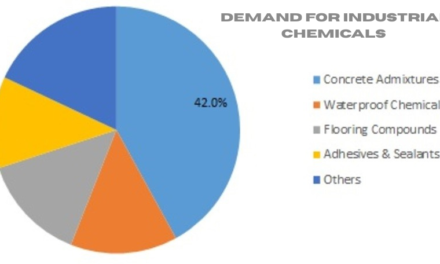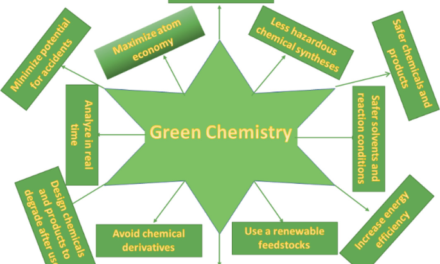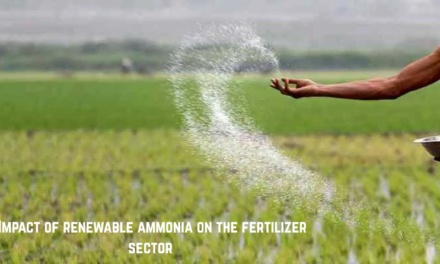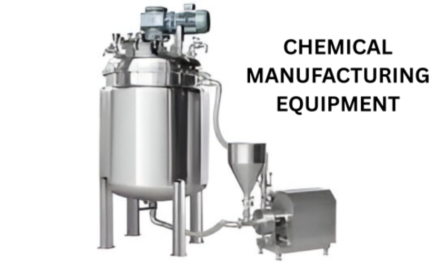The fertilizer industry is actively reducing its dependency on mined phosphates by adopting innovative technologies, recycling practices, and sustainable alternatives to ensure long-term phosphorus availability. Mined phosphates, a non-renewable resource, face challenges such as finite reserves, geopolitical risks, and environmental concerns. Here’s how the industry is addressing these issues:
1. Phosphorus Recovery and Recycling
- Wastewater Treatment:
- Recovering phosphorus from municipal and industrial wastewater streams as struvite or calcium phosphate for use in fertilizers.
- Example: Nutrient recovery technologies like Ostara’s Pearl® system extract phosphorus to produce Crystal Green®, a slow-release fertilizer.
- Animal Manure:
- Processing livestock manure to recover phosphorus as a valuable by-product.
- Impact: Reduces reliance on synthetic phosphates and manages agricultural waste effectively.
- Food Waste and Organic Residues:
- Extracting phosphorus from food processing waste, crop residues, and organic materials for use in bio-based fertilizers.
2. Development of Bio-Based Fertilizers
- Biofertilizers:
- Leveraging phosphorus-solubilizing microorganisms like Bacillus and Pseudomonas to unlock naturally occurring phosphorus in soils.
- Example: Biofertilizers enhance plant phosphorus uptake without additional mined inputs.
- Algal Fertilizers:
- Algae are used as a renewable source of phosphorus-rich biofertilizers, especially in organic farming systems.
3. Improving Phosphorus Use Efficiency
- Enhanced Efficiency Fertilizers (EEFs):
- Coated or controlled-release phosphorus fertilizers minimize losses through leaching and runoff, optimizing phosphorus use.
- Example: Granular fertilizers coated with biodegradable polymers release phosphorus gradually, synchronizing with crop uptake.
- Precision Agriculture:
- Advanced soil testing and GPS-enabled equipment apply phosphorus only where and when needed, reducing waste.
- Crop Breeding:
- Developing crops with improved phosphorus-use efficiency (PUE) reduces the amount of phosphate fertilizer required.
4. Alternative Sources of Phosphorus
- Phosphate Rock Alternatives:
- Using lower-grade phosphate ores and developing technologies to extract phosphorus from these resources efficiently.
- Recycling Industrial By-Products:
- Recovering phosphorus from slag, ash, and other industrial by-products for use in fertilizers.
- Case Study:
- Fertilizer companies in Europe are exploring ash recycling from incinerated sewage sludge to recover phosphorus.
5. Reduction in Fertilizer Misuse
- Education and Awareness:
- Training farmers on optimal phosphorus application rates and timing to reduce overuse and improve efficiency.
- Policy Interventions:
- Governments promote phosphorus-efficient practices through regulations and incentives, such as subsidies for precision tools or biofertilizers.
6. Integration of Circular Economy Practices
- Closed-Loop Systems:
- Implementing systems where phosphorus is continuously recycled within agricultural and industrial processes.
- Regional Recycling Hubs:
- Establishing facilities to collect and process waste streams for phosphorus recovery, especially in urban and livestock-dense areas.
7. Advanced Extraction Technologies
- Improved Mining Processes:
- Innovations in phosphate mining reduce waste and enhance recovery rates, extending the life of existing reserves.
- Phosphorus from Marine Sources:
- Exploring the extraction of phosphorus from seawater or marine sediments as a potential alternative.
8. Addressing Environmental Concerns
- Reducing Runoff and Eutrophication:
- Employing better fertilizer formulations and application methods to minimize phosphorus runoff into water bodies.
- Renewable Energy in Production:
- Using renewable energy sources to power phosphorus recovery and processing systems, reducing the carbon footprint.
9. Research and Development
- Innovative Phosphorus Alternatives:
- Developing synthetic or engineered compounds that mimic the role of phosphates in plant growth.
- Microbial Engineering:
- Enhancing the capabilities of soil microbes to mobilize and recycle phosphorus from organic and inorganic sources.
10. International Collaboration and Policy Support
- Resource Sharing Agreements:
- Collaboration between phosphate-rich and phosphate-importing countries to ensure equitable and sustainable access.
- Regulatory Frameworks:
- Governments and international bodies set policies to encourage recycling and efficient use of phosphorus resources.
- Investment in Recycling Infrastructure:
- Public and private sector funding for phosphorus recovery technologies and facilities.
11. Regional Trends
- Europe:
- Leading in phosphorus recovery technologies and circular economy practices due to stringent environmental regulations.
- Asia:
- Rapid adoption of biofertilizers and precision agriculture to optimize phosphate use.
- North America:
- Investments in wastewater recovery systems and sustainable fertilizer production.
- Africa:
- Exploration of underutilized phosphate reserves alongside initiatives to promote sustainable use.
Future Outlook
- Scaling Recycling Technologies:
- Wider adoption of cost-effective phosphorus recovery systems.
- Bio-Based Fertilizer Expansion:
- Increased use of microbial and algal solutions to complement or replace mined phosphates.
- Global Resource Management:
- Establishing international cooperation for sustainable phosphorus management, ensuring long-term food security.
Conclusion
The fertilizer industry is taking significant steps to reduce dependency on mined phosphates by adopting recycling technologies, enhancing phosphorus use efficiency, and leveraging bio-based alternatives. These strategies not only address resource scarcity but also align with sustainability goals, paving the way for a resilient and environmentally friendly agricultural future.
Hashtags
#PhosphateReduction #SustainablePhosphates #PhosphateAlternatives #FertilizerRevolution #FutureOfPhosphates #Sustainability #EnvironmentalImpact #SustainableFertilizers #EcoFriendlyFarming #GreenAgriculture #ClimateSmartFarming #SustainableFarmingPractices #Innovation #Alternatives #BioBasedFertilizers #PhosphateRecycling #AgriTechInnovation #AlternativeFertilizers #FertilizerInnovation #CircularEconomy #ResourceEfficiency #RecyclingInAgriculture #WasteToFertilizer #EfficientAgriSolutions

















